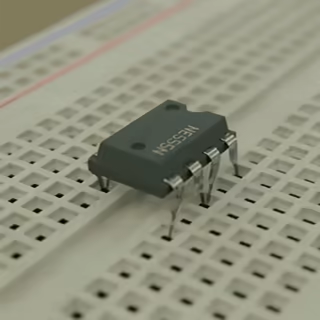

This IoT-based Fire Extinguisher Robot is designed to detect fire and extinguish it automatically. Using sensors to detect flame and smoke, the robot can locate the fire source and extinguish it by spraying water or another extinguishing agent. The system is equipped with an IoT module for real-time monitoring and control, enabling remote operation in case of emergency.
This IoT-based Fire Extinguisher Robot is designed to detect fire and extinguish it automatically. Using sensors to detect flame and smoke, the robot can locate the fire source and extinguish it by spraying water or another extinguishing agent. The system is equipped with an IoT module for real-time monitoring and control, enabling remote operation in case of emergency.
The Fire Extinguisher Robot detects fire through the flame and smoke sensors. When a fire is detected, the Arduino processes the sensor data and directs the robot towards the fire. Once near the fire source, it activates the water pump to extinguish the fire. The IoT module enables real-time monitoring and remote control capabilities, allowing operators to monitor fire situations from a distance and take control if needed.
Here is how to connect the components:
// IoT-Based Fire Extinguisher Robot
#include
const int flameSensorPin = 2; // Flame sensor pin
const int smokeSensorPin = A0; // Smoke sensor pin
const int relayPin = 7; // Relay pin to control pump
const int motorPin1 = 3; // Motor pins for movement
const int motorPin2 = 4;
const int motorPin3 = 5;
const int motorPin4 = 6;
// WiFi credentials
const char* ssid = "your_SSID";
const char* password = "your_PASSWORD";
void setup() {
Serial.begin(9600);
pinMode(flameSensorPin, INPUT);
pinMode(smokeSensorPin, INPUT);
pinMode(relayPin, OUTPUT);
pinMode(motorPin1, OUTPUT);
pinMode(motorPin2, OUTPUT);
pinMode(motorPin3, OUTPUT);
pinMode(motorPin4, OUTPUT);
digitalWrite(relayPin, HIGH); // Pump off initially
WiFi.begin(ssid, password);
// Connect to WiFi
while (WiFi.status() != WL_CONNECTED) {
delay(1000);
Serial.print(".");
}
Serial.println("Connected to WiFi");
}
void loop() {
int flameDetected = digitalRead(flameSensorPin);
int smokeLevel = analogRead(smokeSensorPin);
if (flameDetected == LOW || smokeLevel > 300) { // Fire detected
moveTowardsFire();
digitalWrite(relayPin, LOW); // Turn on pump
Serial.println("Extinguishing fire");
} else {
stopMoving();
digitalWrite(relayPin, HIGH); // Turn off pump
Serial.println("No fire detected");
}
delay(2000);
}
void moveTowardsFire() {
digitalWrite(motorPin1, HIGH);
digitalWrite(motorPin2, LOW);
digitalWrite(motorPin3, HIGH);
digitalWrite(motorPin4, LOW);
}
void stopMoving() {
digitalWrite(motorPin1, LOW);
digitalWrite(motorPin2, LOW);
digitalWrite(motorPin3, LOW);
digitalWrite(motorPin4, LOW);
}
Using the ESP8266 Wi-Fi module, this robot can be monitored and controlled remotely. By sending data to a cloud platform like ThingSpeak or Firebase, users can track the status of the fire detection in real time and take manual control if necessary.
The system works in the following steps:
This IoT-based Fire Extinguisher Robot is a practical solution for early fire detection and prevention. With real-time monitoring and autonomous control, it provides a quick response to fire hazards and can be a life-saving system in critical applications.